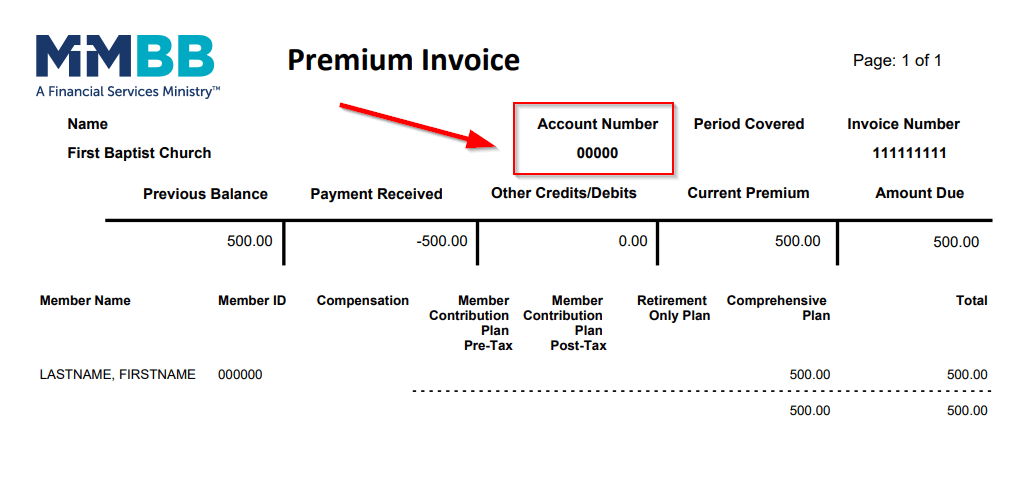The Markets (as of market close August 31, 2021)
The benchmark indexes enjoyed a solid August, with the S&P 500 and the Nasdaq reaching record highs multiple times during the month. In fact, the S&P 500 recorded its seventh straight monthly advance — its longest streak of monthly gains since January 2018. Each of the benchmarks is well ahead of its 2020 year-end value, led by the S&P 500, followed by the Nasdaq, the Global Dow, the Dow, and the Russell 2000. Ten-year Treasury yields increased and crude oil prices fell, while the dollar and gold prices inched higher.
Stocks climbed higher in August, despite a drop in consumer confidence amid the spread of the Delta variant and the possibility of travel restrictions. Growth and technology shares outperformed cyclicals. Each of the market sectors gained, with only the energy sector sliding lower. Financials and communication services advanced the most.
Federal Reserve Chair Jerome Powell may have done enough to help calm investors' concerns by promoting the idea that interest rates will remain at their current level for some time, although a reduction in the bond-buying stimulus program may begin before the end of the year. Inflationary pressures continued to rise as prices at the consumer and producer levels increased in July.
Second-quarter GDP showed the economy expanded by nearly 7.0%. Sales of existing and new homes advanced, as prices for new single-family homes rose, while prices for existing homes slid. Industrial production increased. Close to 1.0 million new jobs were added in both June and July, while the unemployment rate and the number of unemployment claims fell.
MARKET SUMMARY
| MARKET/INDEX |
AS OF 8/31 |
PRIOR MONTH |
2020 CLOSE |
MONTHLY CHANGE |
YTD CHANGE |
| DJIA |
35,360,73 |
34,935.47 |
30,606.48 |
1.22% |
15.53% |
| NASDAQ |
15,259.24 |
14,672.68 |
12,888.28 |
4.00% |
18.40% |
| S&P 500 |
4,522.68 |
4,395.26 |
3,756.07 |
2.90% |
20.41% |
| RUSSELL 2000 |
2,273.77 |
2,226.25 |
1,974.86 |
2.13% |
15.14% |
| GLOBAL DOW |
4063.77 |
3,981.32 |
3,487.52 |
2.07% |
16.52% |
| FED. FUNDS |
0.00%-0.25% |
0.00%-0.25% |
0.00%-0.25% |
0 BPS |
0 BPS |
| 10-YEAR TREASURIES |
1.30% |
1.23% |
0.91% |
7 BPS |
39 BPS |
| US DOLLAR-DXY |
92.67 |
92.14 |
89.84 |
0.58% |
3.15% |
| CRUDE OIL-CL=F |
$68.51 |
$73.81 |
$48.52 |
-7.18% |
41.20% |
| GOLD-GC=F |
$1,817.50 |
$1,816.70 |
$1,893.10 |
0.04% |
-3.99% |
Chart reflects price changes, not total return. Because it does not include dividends or splits, it should not be used to benchmark performance of specific investments.
Latest Economic Reports
- Employment: There were 943,000 new jobs added in July, keeping up with the pace of June's upwardly revised estimate of 938,000 new jobs. Employment in July is up by 16.7 million since April 2020 but is down by 5.7 million, or 3.7%, from its pre-pandemic level in February 2020. Notable job growth in July occurred in leisure and hospitality (+380,000), with over half of the job gain coming from food services and drinking places (+253,000). Job gains also occurred in local government education (+221,000) and private education (+40,000), professional and business services (+60,000), and transportation and warehousing (+50,000). In July, the unemployment rate declined 0.5 percentage point to 5.4%, with the number of unemployed persons falling by 782,000 to 8.7 million. These measures are down considerably from their recent highs in April 2020 but remain well above their levels prior to the pandemic (3.5% and 5.7 million, respectively, in February 2020). Among the unemployed, the number of persons on temporary layoff dropped by 572,000 to 1.2 million. This measure is down considerably from the recent high of 18.0 million in April 2020 but is 489,000 above the February 2020 level. In July, the number of persons not in the labor force who currently want a job was 6.5 million, little changed over the month but up by 1.5 million since February 2020. In July, the number of employed persons who teleworked because of the pandemic fell to 13.2%, down from 14.4% in the prior month. In July, 5.2 million persons reported that they had been unable to work because their employer closed or lost business due to the pandemic. This measure is down from 6.2 million in June. The labor force participation rate ticked up 0.1 percentage point to 61.7% in July, and the employment-population ratio increased by 0.4 percentage point to 58.4%. Average hourly earnings increased by $0.11 to $30.54 in July after increasing $0.10 in June. Average hourly earnings are up 4.0% from July 2020. The average work week was unchanged at 34.8 hours in July.
- The number of claims for unemployment insurance continued to fall. According to the latest weekly totals, as of August 14 there were 2,862,000 workers receiving unemployment insurance benefits, down from the July 17 total of 3,269,000. The unemployment rate for the week ended August 14 was 2.1%, down 0.3 percentage point from the July 17 rate of 2.4%. This is the lowest level for insured unemployment since March 14, 2020, when it was 1,770,000. During the week ended August 7, Extended Benefits were available in 10 states/territories: Alaska, California, Connecticut, the District of Columbia, Illinois, Nevada, New Jersey, New Mexico, New York, and Texas; 46 states reported 5,004,753 continued weekly claims for Pandemic Unemployment Assistance benefits (5,246,162 in July), and 47 states reported 3,793,956 continued claims for Pandemic Emergency Unemployment Compensation benefits (4,233,883 in July).
- FOMC/interest rates: The Federal Open Market Committee did not meet in August. However, at the Jackson Hole Economic Policy Symposium, Federal Reserve Chair Jerome Powell reiterated that the current spike in inflation is largely the result of transitory factors and that the FOMC will continue to hold the current target range for the federal funds rate at its current level. Powell also noted that an eventual reduction of monthly asset purchases is likely to begin some time before the end of 2021.
- GDP/budget: According to the second estimate, the economy accelerated at an annual rate of 6.6% in the second quarter of 2021 after advancing 6.3% in the first quarter of 2021. Consumer spending, as measured by personal consumption expenditures, increased 11.9% in the second quarter after rising 11.4% in the prior quarter. The personal consumption price index (prices for consumer goods and services) rose 6.5% in the second quarter after climbing 3.8% in the first quarter. Excluding food and energy, the price index increased 6.1%. In the second quarter, fixed investment climbed 3.4% following a 13.0% increase in the first quarter; residential fixed investment fell 11.5% after increasing 13.3% in the first quarter. Exports rose 6.6% in the second quarter after decreasing 2.9% in the first quarter, and imports (which are a negative in the calculation of GDP) increased 6.7% in the second quarter (9.3% in the first quarter).
The Treasury budget deficit was $302.1 billion in July, following the June deficit of $174.2 billion. The deficit is 380% larger than the deficit in July 2020. Following the latest increase, the budget deficit through the first 10 months of the current fiscal year widened to $2.54 trillion, 10.0% lower than last year's deficit over the same period. Compared to last fiscal year, government expenditures have increased 4.0%, while receipts have increased 18.0%.
- Inflation/consumer spending: Prices at the consumer level continued to advance in July. According to the latest Personal Income and Outlays report, consumer prices rose 0.4% in July after edging up 0.5% in June. Prices have increased 4.2% since July 2020. Excluding food and energy, consumer prices rose 0.3% in July (0.4% in June) and 3.6% since July 2020. Both personal income and disposable (after-tax) personal income increased 1.1% in July. Consumer spending rose 0.3% in July following a 1.1% jump in June.
The Consumer Price Index climbed 0.5% in July, the same increase as in June. Over the 12 months ended in July, the CPI rose 5.4%. Food prices increased 0.7% and new vehicle prices rose 1.7%.
Energy prices rose 1.6%, with gasoline prices climbing 2.4%. Core prices, excluding food and energy, climbed 0.3% in July and have advanced 4.3% since July 2020. Over the last 12 months, energy prices have risen 23.8%, food prices have increased 3.4%, and prices for used cars and trucks have climbed 41.7%.
- Prices that producers receive for goods and services continued to climb in July, increasing 1.0% for the second consecutive month. Producer prices increased 7.8% for the 12 months ended in July, the largest yearly gain since November 2010 when 12-month data was first calculated. In July, prices for services rose 1.1% and prices for goods moved up 0.6%. Producer prices less foods, energy, and trade services advanced 0.9% in July and have risen 6.1% since July 2020, the largest 12-month increase since August 2014.
- Housing: Existing home prices advanced for the second consecutive month after climbing 2.0% in July. Over the past 12 months, existing home sales increased 1.5%. The median existing-home price was $359,900 in July ($363,300 in June), up 17.8% from July 2020. Total housing inventory at the end of July rose 7.3% from June's supply but is down 12.0% from one year ago. Unsold inventory sits at a 2.6-month supply at the present sales pace, up slightly from the 2.5-month figure recorded in June but down from 3.1 months in July 2020. Sales of existing single-family homes rose 2.7% in July following a 1.4% advance in June. Year over year, sales of existing single-family homes fell 0.8%. The median existing single-family home price was $367,000 in July, down from $370,600 in June.
- New single-family home sales increased for the first time in four consecutive months after advancing 1.0% in July. Sales of new single-family homes have decreased 27.2% from July 2020. The median sales price of new single-family houses sold in July was $390,500 ($361,800 in June). The July average sales price was $446,000 ($428,700 in June). The inventory of new single-family homes for sale in July represents a supply of 6.2 months at the current sales pace, up slightly from the June estimate of 6.0 months.
- Manufacturing: Industrial production increased 0.9% in July after advancing 0.2% the previous month. Manufacturing output rose 1.4% after edging down 0.1% in June. About half of the gain in factory output was attributable to a jump of 11.2% for motor vehicles and parts, as a number of vehicle manufacturers trimmed or canceled their typical July shutdowns. In July, mining increased 1.2% (0.5% in June), while utilities slipped 2.1% after advancing 3.1% in June. Total industrial production in July was 6.6% higher
than its year-earlier level, but it was 0.2% below its pre-pandemic (February 2020) level.
- New orders for durable goods decreased 0.1% in July after falling 0.8% in June. Transportation drove July's decrease, with new orders down 2.2% after advancing 1.4% in June. Excluding transportation, new orders increased 0.7%. Excluding defense, new orders fell 1.2%. New orders for nondefense capital goods declined 8.0% following a 1.6% increase in June. New orders for defense capital goods increased 20.5% in July after decreasing 1.4% in June.
- Imports and exports: Inflationary pressures at the import level slowed in July. Import prices rose 0.3% following a 1.1% advance in June. Import prices rose 10.2% over the 12 months ended in July (11.2% for the 12 months ended in June). The monthly advance in import prices was the lowest since November 2020. Import fuel prices increased 2.9% in July following a 5.5% jump in June. Import fuel prices advanced 66.5% for the year ended in July (85.1% for the year ended in June). Nonfuel import prices were unchanged in July following a 0.7% advance in June. Export prices increased 1.3% in July after climbing 1.2% in June. For the year ended in July, the price index for exports rose 17.2%. Agricultural export prices fell 1.7% in July following a 1.5% advance in June. Nonagricultural exports rose 1.6% in July after increasing 1.1% in June.
- The international trade in goods deficit was $86.4 billion in July, down $5.7 billion, or 6.2%, from June. In July, exports increased $2.2 billion, or 1.5%, while imports fell $3.4 billion, or 1.4%. For the 12 months ended in July, exports have risen 27.6%, while imports have increased 19.6%.
- The latest information on international trade in goods and services, out August 5, is for June and shows that the goods and services trade deficit increased by 6.7% to $75.7 billion. June exports rose 0.6%, while imports increased 2.1%. At $284.0 billion, imports of goods and services were the highest on record. Year over year, the goods and services deficit increased $135.8 billion, or 46.4%, from June 2020. Exports increased $150.9 billion, or 14.3%. Imports increased $286.7 billion, or 21.3%.
- International markets: Inflationary pressures may be slowing at home and around the world. China's Consumer Price Index rose 0.3% in July and is up only 1.0% year over year. Prices were flat in the United Kingdom in July and have increased 2.0% since July 2020. However, prices in the Eurozone picked up in August, climbing 0.4% for the month and 3.0% over the past 12 months. Overall economic growth is trending upward as well. Second-quarter GDP for the Eurozone rose 2.0% and is up 13.6%
year over year. The United Kingdom's GDP advanced 4.8% in the second quarter and 22.2% for the year. China's economy continues to rebound, as its GDP rose 7.9% in the second quarter from a year ago. For August, the STOXX Europe 600 Index gained about 1.2%; the United Kingdom's FTSE inched up 0.3%; Japan's Nikkei 225 Index rose 1.1%; and China's Shanghai Composite Index increased nearly 2.3%.
- Consumer confidence: According to the latest report from The Conference Board, consumer confidence declined in August for the second consecutive month. The Consumer Confidence Index® stands at 113.8, down marginally from 125.1 in July. The Present Situation Index, based on consumers' assessment of current business and labor market conditions, fell to 147.3 in August from 157.2 in July. The Expectations Index, based on consumers' short-term outlook for income, business, and labor market conditions, registered 91.4 in August, down from 103.8 in July. According to the report, concerns about the Delta variant, coupled with rising gas and food prices, resulted in a less favorable view of current economic conditions.
Eye on the Month Ahead
September could see the economy and the stock market slow down a tad. The number of coronavirus cases continues to rise prompting several foreign countries to consider re-instituting travel restrictions. In addition, the Federal Reserve has indicated that it is likely to begin tapering the bond purchase program in 2021, which could make investors a bit skittish in anticipation of such a move.
Data sources: Economic: Based on data from U.S. Bureau of Labor Statistics (unemployment, inflation); U.S. Department of Commerce (GDP, corporate profits, retail sales, housing); S&P/Case-Shiller 20-City Composite Index (home prices); Institute for Supply Management (manufacturing/services). Performance: Based on data reported in WSJ Market Data Center (indexes); U.S. Treasury (Treasury yields); U.S. Energy Information Administration/Bloomberg.com Market Data (oil spot price, WTI, Cushing, OK); http://www.goldprice.org (spot gold/silver); Oanda/FX Street (currency exchange rates). News items are based on reports from multiple commonly available international news sources (i.e. wire services) and are independently verified when necessary with secondary sources such as government agencies, corporate press releases, or trade organizations. All information is based on sources deemed reliable, but no warranty or guarantee is made as to its accuracy or completeness. Neither the information nor any opinion expressed herein constitutes a solicitation for the purchase or sale of any securities, and should not be relied on as financial advice. Past performance is no guarantee of future results. All investing involves risk, including the potential loss of principal, and there can be no guarantee that any investing strategy will be successful.
The Dow Jones Industrial Average (DJIA) is a price-weighted index composed of 30 widely traded blue-chip U.S. common stocks. The S&P 500 is a market-cap weighted index composed of the common stocks of 500 largest, publicly traded companies in leading industries of the U.S. economy. The NASDAQ Composite Index is a market-value weighted index of all common stocks listed on the NASDAQ stock exchange. The Russell 2000 is a market-cap weighted index composed of 2,000 U.S. small-cap common stocks. The Global Dow is an equally weighted index of 150 widely traded blue-chip common stocks worldwide. The U.S. Dollar Index is a geometrically weighted index of the value of the U.S. dollar relative to six foreign currencies. Market indices listed are unmanaged and are not available for direct investment.
IMPORTANT DISCLOSURES
Broadridge Investor Communication Solutions, Inc. does not provide investment, tax, legal, or retirement advice or recommendations. The information presented here is not specific to any individual’s personal circumstances.
To the extent that this material concerns tax matters, it is not intended or written to be used, and cannot be used, by a taxpayer for the purpose of avoiding penalties that may be imposed by law. Each taxpayer should seek independent advice from a tax professional based on his or her individual circumstances.
These materials are provided for general information and educational purposes based upon publicly available information from sources believed to be reliable — we cannot assure the accuracy or completeness of these materials. The information in these materials may change at any time and without notice.








